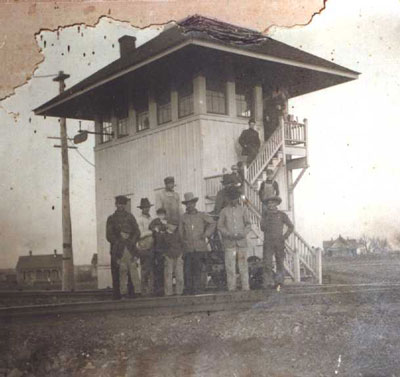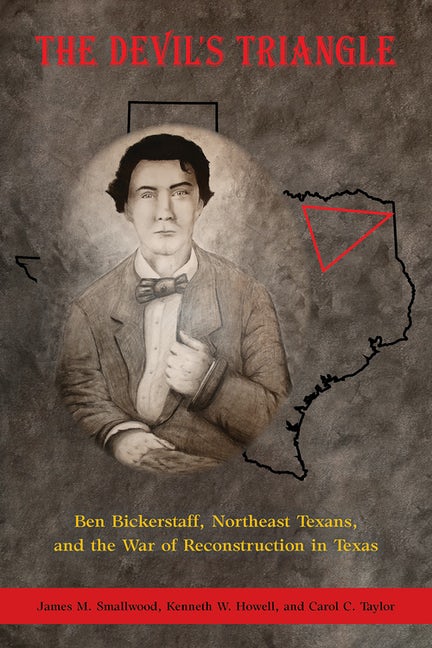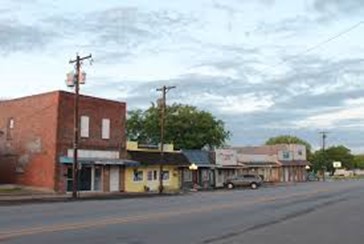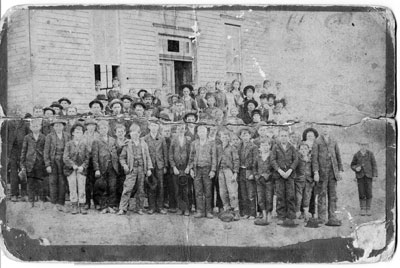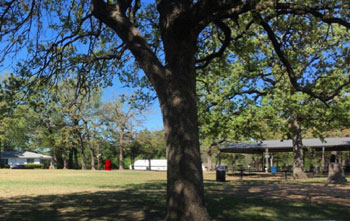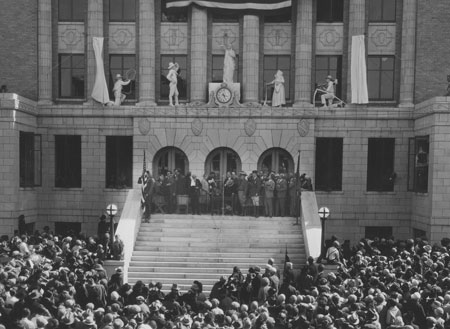
Ninety years ago, the courthouse at Greenville became the center of Hunt County and remains a very important part of the county even today. Since one of the district court rooms has been modified to allow trials to take place with certain restrictions during the pandemic, a review of the use of the two courtrooms might be interesting.
When the courthouse was opened in April 1929, the interior was described as “palatial”, and the court rooms were considered “regal throne rooms.” All walls in the interior were covered with oak paneling. The third and fourth floors were designed to house county and district court systems. The fifth and sixth floors were jails.
On the southeast corner of the third floor was the county court room. Quarter sawed oak was used to construct the judge’s screen, witness box, clerk’s table, reporter’s table and six jury chairs. A large number of opera chairs were provided for spectators. Behind the court room was the office of the county judge, adjoining the offices of the county commissioners. The County Judge’s quarters consisted of a reception room and a private office. The commissioners were provided with a reception room.
In the northeast corner were offices for the District Attorney and reception room. On the north side was the office of the District Clerk which had a special vault for records.
In the center of the north side of the third floor was the sheriff’s department with offices for deputies. Next to the deputies’ offices was a hold-over cell adjoining one of the elevators. Prisoners or attached witnesses could be place in this cell for safe-keeping.
The northwest corner was the office of the district judge with an office for the court reporter adjoining.
The district court room occupied practically all of the west side of the third floor. The district court room utilized two floors with a twenty-four-foot ceiling and balcony. Here, too, the furniture was quarter-sawed oak for the judge’s screen, the jury box, witness chairs, desks for clerk and court reporters. All the furniture as new and matching. To make the jury as comfortable as possible the jury box had comfortable chairs and brass foot rails. The main floor of the court room had benches of spectators while the balcony, which was entered from the floor above, had opera chairs. A spiral stair led to the dormitory of the floor above which was furnished with modern sleeping quarters and built-in marble tub baths, showers, and toilets.
To the east side of the fourth floor was another identical district court room. When the courthouse was built in 1929, it was hoped that the District Court of Appeals would be located in Hunt County, but Texarkana was chosen. The inclusion of two courtrooms was also to allow two trials at the same time. This courtroom also had a dormitory which was rationalized to the public as being used for women, if and when, women were ever allowed to serve on juries in district court cases.
Ironically, it would be a quarter of a century until women in Texas could serve on juries in the summer of 1954. As of this year 2021, Hunt County has an exemplary woman judge, Kelli Aiken.

